Treatment of rosacea / couperose
Get rid of annoying facial redness!
Everything at a glance
- Application: possible all year round
- Treatment duration: a few minutes
- Anesthesia: none
- Pain: minor pain possible as no local anesthetic ointment may be used
- Sociability: 2-3 days, but it is possible to apply make-up immediately after the treatment
- Visibility of the results: 2 days later
- Long-term durability of the results
What is rosacea?
Rosacea (also known as rosacea, formerly “copper rose”) is a chronic inflammatory disease of the skin that is particularly recognizable by facial redness. It is one of the most common skin diseases and is often hereditary, but not contagious.
The skin in the facial area is most frequently affected by rosacea, usually the nose, cheeks, forehead and chin. In rare cases, areas such as the scalp, neck or décolleté also show symptoms. In individual cases, the disease also manifests itself on the eyes, with the eyelids also being affected.
Rosacea can have different degrees of severity and varies from patient to patient. The affected person does not necessarily have to reach the final stage as long as the disease is recognized and treated in time. If you suspect that you are suffering from rosacea, do not hesitate to contact your doctor. As a specialist in dermatology, I will be happy to help you. Feel free to contact me for a consultation!
In order to avoid the spread of rosacea in general, it is important to avoid various risk factors. These include, for example, excessive UV radiation, as this has a negative effect on the patient’s skin. Chronic redness in the facial area can therefore also be a result of excessive sun exposure, as this accelerates the formation of fine blood vessels under the skin. You can find out which causes increase the appearance and symptoms of rosacea on this page!
Important to know: The terms “rosacea” and “couperose” are often used as synonyms, although this is not entirely correct from a medical point of view, as “couperose” is actually a preliminary stage of “rosacea”, which does not necessarily have to result in rosacea. This is why the term ” rosacea ” is subsequently used.
How is rosacea treated?
Unfortunately, there is currently no treatment that can completely cure rosacea. Nevertheless, there are many therapeutic approaches that can help to reduce the effects of the disease. Probably the most effective way to treat it is to avoid certain triggers. If you know your triggers, you can avoid them and thus reduce the frequency of flare-ups. Gentle skin care is also important for people with rosacea. Cleansers and moisturizers that are suitable for sensitive skin can help soothe irritation and reduce redness. It is best to seek advice from a dermatologist.
Supportive therapy for rosacea with injectable polynucleotides
In our practice, we also offer the use of injectable polynucleotides in addition to classic rosacea treatment. These highly effective substances help to strengthen the skin barrier and reduce inflammation, which is often associated with rosacea. Polynucleotides promote the natural regeneration of the skin and can help to alleviate redness and skin irritation. Thanks to their soothing and repairing properties, they offer promising support for a balanced and more even complexion, even for sensitive and rosacea-prone skin.
What can I do myself to prevent/relieve my rosacea?
Nutrition
Although diet plays an important role in the development and treatment of rosacea, there is no specific diet for the treatment and prevention of rosacea, as the triggers of the so-called “flushes” are individual to each person affected.
However, experience shows that hot spices, very spicy foods and drinks, alcohol and nicotine cause vasodilation (dilation of the blood vessels) in the face. A survey of sufferers also cited tomatoes and citrus fruits as triggers for rosacea relapse. The National Rosacea Association also cites liver, eggs, dairy products and some legumes as potential triggers for a rosacea flare-up. However, which foods aggravate rosacea varies from patient to patient. Nevertheless, all those affected should avoid these foods as much as possible!

My advice
Eat a healthy and balanced diet overall. In particular, eat plenty of fruit and vegetables to reduce your fat and sugar intake. This reduces the risk of clogging the pores of your facial skin and helps to prevent symptoms. This in turn has a positive effect on the health of your skin!
Whether and how the skin reacts to certain foods is very individual. Overall, it is therefore worth consciously looking for individual foods from time to time and observing whether and how the symptoms of rosacea change as a result.
Skin care
I would like to make it clear from the outset that skin care at home cannot replace medical care in the case of rosacea! Nevertheless, it is important that you support and promote the health of your facial skin. Find out which skin care products are well tolerated by you and avoid particularly aggressive ingredients.
My tips for skin care
- Avoid irritating/aggressive products (e.g. with alcohol)
- Opt for care products with fewer ingredients. The rule here is - less is more!
- This also applies to very complex products - opt for care products with fewer ingredients.
- Avoid facial scrubs and products that stimulate blood circulation in your face!
- Do without make-up! Most conventional products contain minerals and silicones that have a sealing effect.
- Don't forget sun protection!
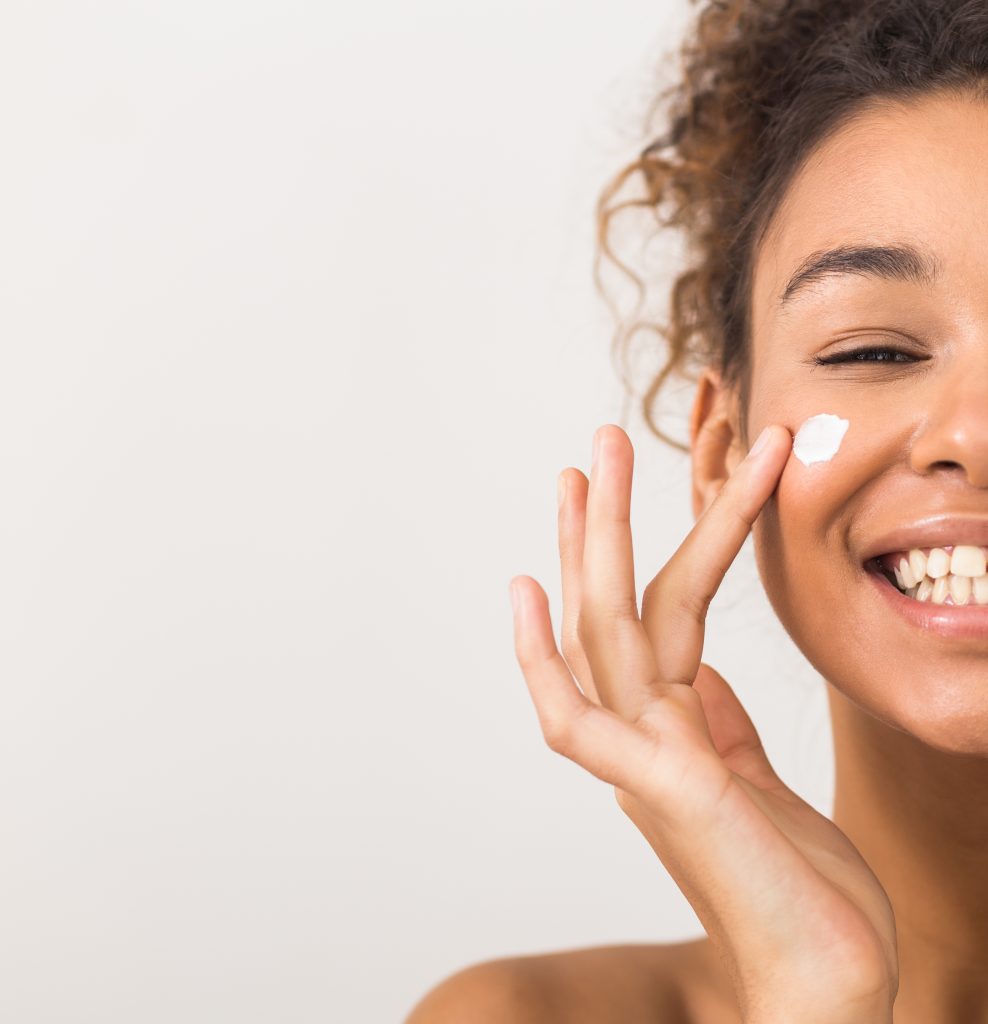
Avoidance of further trigger factors
In addition to diet and skin care, there are other factors that can prevent rosacea flare-ups and thus its symptoms. These include
- Intense UV radiation (solarium, sunbathing)
- Stress
- Strong temperature fluctuations
- Certain medications and/or cosmetics
How can a doctor help you fight your rosacea?
In my practice, depending on how far couperose rosacea has already progressed, it is treated with creams, gels or lotions specially tailored to the skin type with the active ingredients azelaic acid, which kills bacteria and excess mites and acts against keratinization of the sebaceous glands.
It should be noted here that everyone has mites living in their sebaceous glands. Rosacea can cause them to multiply many times over and trigger an inflammatory reaction in the skin. What remains in any case is the uniform redness and a feeling of heat (“flushing symptoms”), which patients find very distressing.
Finally, there are several prescription medications that can be used to treat rosacea. These include topical creams and oral antibiotics. If you are struggling with rosacea, be sure to consult your doctor and discuss the most appropriate treatment options for you.
Rosacea treatment with IPL
Treatment using IPL is also possible. In usually two to three sessions at monthly intervals, the annoying blood vessels under the skin are “flashed” and thus broken down by the body – the redness gradually disappears. The treatment only takes a few minutes and the first results can be seen just two days later: the natural color of the face returns and the skin heals without flaking or crusts!
BEFORE-AFTER results
BEFORE
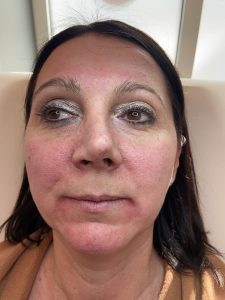
AFTER
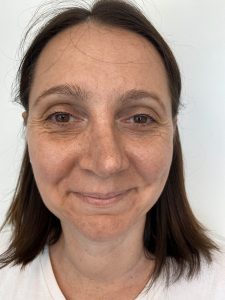
BEFORE
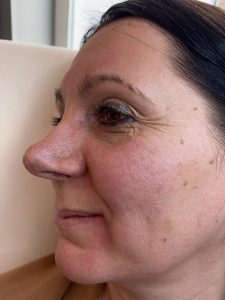
AFTER
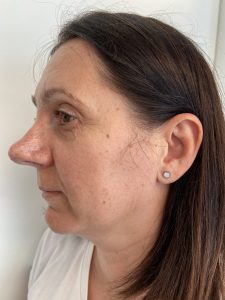
BEFORE
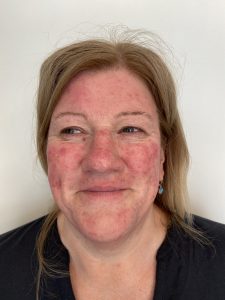
AFTER
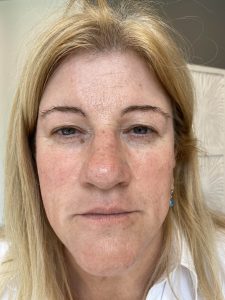
Symptoms of rosacea
The symptoms of rosacea are different and vary from person to person. A large number of symptoms are known, but these do not necessarily apply to every patient. It is particularly characteristic of this disease that the symptoms appear in phases.
I can recognize the skin disease by the following symptoms:
- Redness, especially in the center of the face (e.g. nose and cheeks). This redness can increase or persist as the disease progresses.
- Reddening of the skin with a feeling of warmth ("flushing").
- Visible dilation of blood vessels (telangiectasia).
- Papules (thickening of the skin)
- Pustules or pimples (pus-filled blisters)
- Lymphoedema (swelling of the lymphatic vessels)
- Other skin changes (skin dryness, skin changes, growths, swellings, etc.)
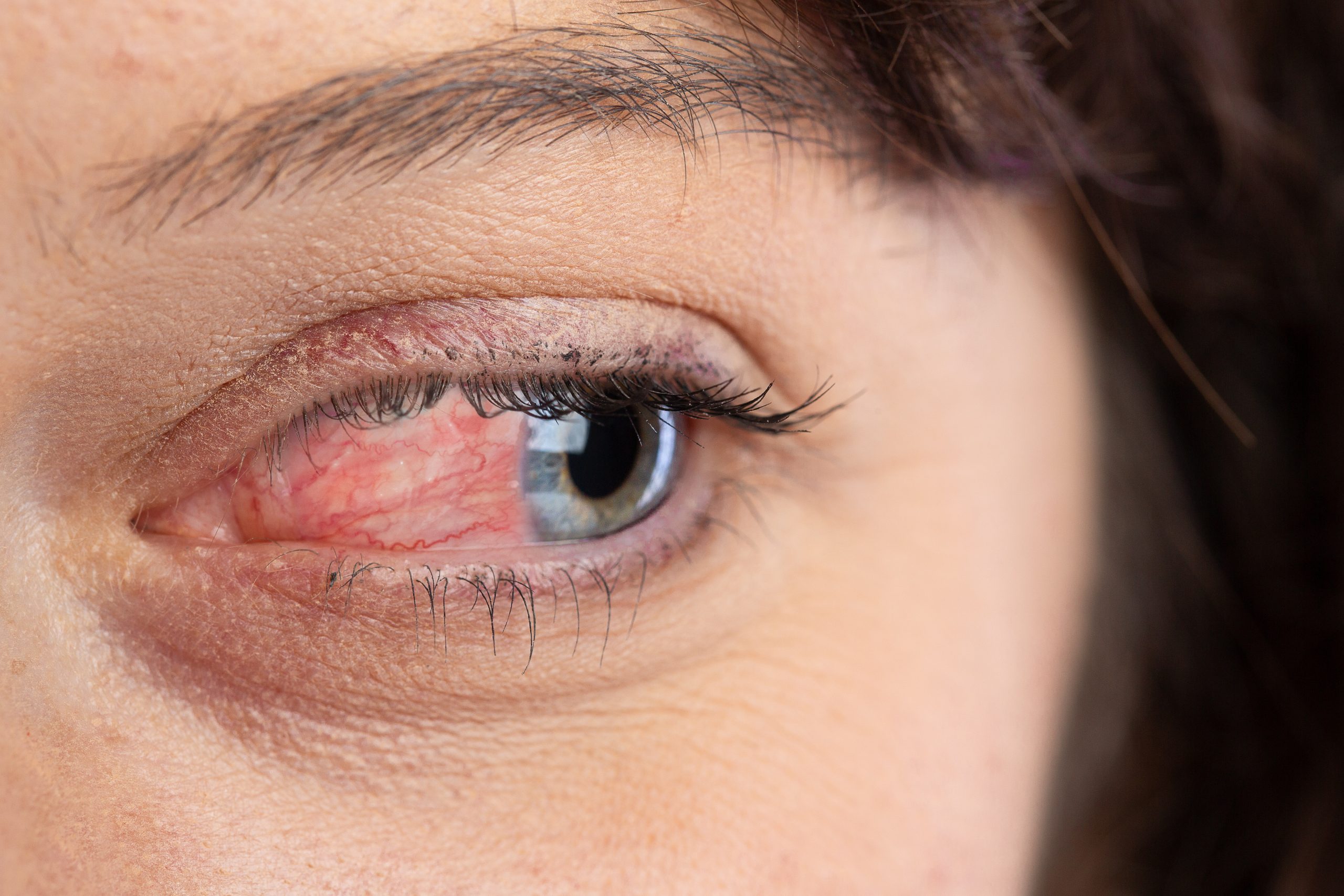
Rosacea in the eyes
In some cases, the eyes are also affected by rosacea. Patients usually notice this through dilated blood vessels in the eyes and dry or inflamed eyes. In addition, the area around the eyes is affected by scaly and crusty eyelid edges and those affected experience a foreign body sensation in the eyes.
The eye disease usually occurs in combination with classic rosacea. If your eyes are also affected by rosacea, please contact an ophthalmologist!
Rhinophyma - "snotty nose" as a result of rosacea
Rhinophyma, also known colloquially as “bulbous”, “potato” or “boozy” nose, is a symptom of rosacea that often becomes noticeable when the disease is severe. This symptom mainly occurs in older men! Although rhinophyma is often referred to as a “boozer’s nose”, it can also occur with complete abstinence from alcohol.
Many of those affected suffer from the psychological consequences of the cosmetic effects of rhinophyma, but the widespread rosacea on the nose does not pose a health risk. In some cases, patients find it more difficult than usual to breathe through their nose.
Causes and risk factors
What are the causes of rosacea?
As already described, rosacea is a chronic skin condition that causes inflammation and redness on the face. There are many possible causes of rosacea, but the exact causes are unknown. Nevertheless, there are some factors that can increase the risk of developing rosacea. These include fair skin, a family history, certain illnesses and the use of certain medications. Rosacea is also more common in women than in men and usually begins after the age of 30.
There is no cure for rosacea, but targeted treatments can help control the symptoms. Do you have any of the above symptoms and suspect that you have rosacea? See a dermatologist in your area! Feel free to contact me for a consultation! If your suspicion is confirmed, I will work with you to create the most suitable treatment concept for you! I look forward to hearing from you!
What factors aggravate rosacea?
There are a number of factors that can aggravate rosacea, including sun exposure, stress, weather changes, alcohol consumption and spicy food. Sun exposure is a common trigger for rosacea flare-ups as the heat can dilate blood vessels, leading to redness and inflammation. Stress can also exacerbate rosacea symptoms as the body releases cortisol as a natural response to stress. This substance can cause the blood vessels to dilate.
Changes in the weather can also trigger a flare-up, as extreme temperatures can dilate or contract the blood vessels. Alcohol consumption can also aggravate rosacea as it causes the blood vessels to dilate. Finally, spicy foods can also trigger a rosacea flare-up as they dilate the blood vessels and cause the body to sweat.
An overview of factors that aggravate rosacea:
- Strong temperature fluctuations
- UV radiation
- Stress
- Aggressive skin care products
- Consumption of alcohol, nicotine and caffeine
- Spicy food
- Mental factors
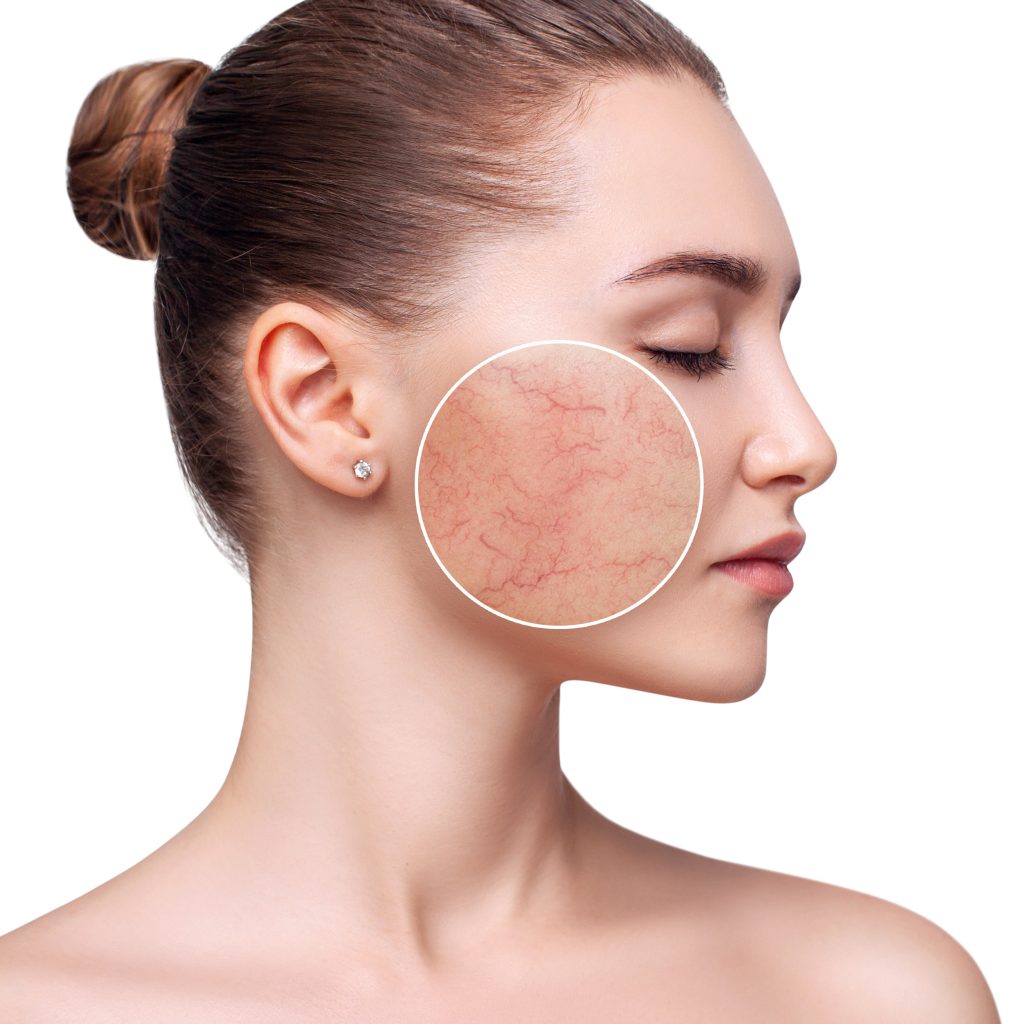
Who is affected by rosacea?
Rosacea mainly affects people with skin type 1. Special characteristics of this skin type are a particularly light skin color, reddish or light blond hair, light eyes (blue, green, gray), freckles and a strong tendency to sunburn. This is also the reason why the disease, in which those affected suffer from facial redness, occurs more frequently in the north than in the south and is often referred to as the “curse of the Celts”.
But why do lighter skin types suffer more frequently from unwanted facial redness?
This is because they do not have the ability to form sufficient pigment and their sun-sensitive skin reacts with increased vascular growth (tendency to redden) instead of a “tan” (i.e. pigment formation). Such a reaction is considerably intensified by the sun. Spicy foods and alcohol can also significantly worsen the unloved tendency to redden. As bacteria and skin mites also feel at home in this skin condition, purulent inflammations with “pimples”, i.e. painful deep-seated lumps, also occur in the further course of the disease.
Are men or women more frequently affected by the skin disease?
Experts are convinced that women suffer from the disease more frequently than men. However, opinions differ here, as other specialists have found that both sexes are equally affected. The development of nodular changes in the skin (phymas) occurs predominantly in men. The maximum variant of this skin disease, the dreaded “snotty nose” or “bulbous nose”, is characterized by a significantly enlarged, heavily reddened nose covered in pustules, which occurs predominantly in men.
Rosacea in children
Children are little or not at all affected by rosacea. The disease manifests itself with similar symptoms (redness on the face) as in adults. In children, the areas around the eyes often suffer from rosacea. The onset of the disease is most common in people between the ages of 30 and 50.
The stages of rosacea
The disease can progress rapidly, but can also come to a standstill at any stage. The disease usually progresses in relapses, so timely and professional treatment is essential to prevent this!
The preliminary stage of rosacea can be recognized by sudden, fleeting reddening of the skin, which often occurs under the influence of external stimuli (heat, cold, spicy food, alcohol) and stress.
In stage 1 (rosacea erythematosa-teleangiectatica), the skin is reddened and has dilated blood vessels. The cheeks and nose are particularly affected. The skin may burn or itch. Initially, the redness subsides, but later on it remains permanently visible. Couperose is the most common subtype of rosacea, accounting for 70% of cases.
In stage 2 (rosacea papulopustulosa), the quality of the skin deteriorates further. In this phase, inflammatory, reddened, sometimes pus-filled blisters and nodules appear as rosacea symptoms in addition to the reddening of the skin. In some cases, swelling (also lymphoedema) also develops in the facial tissue.
Stage 3 (rosacea hypertrophica) describes the most severe form of rosacea. Here the sebaceous glands and connective tissue are greatly enlarged. This stage is characterized by proliferating sebaceous glands and a leathery coarsening of the skin structure. These bulbous growths are also called phyma. The “bulbous nose”, which describes the appearance of these growths on the nose (rhinophyma), is particularly well known. Those affected often suffer greatly, particularly because of the cosmetic effects of these changes.
It is often difficult for the treating physician to classify the patient in exactly one of the above-mentioned stages. A modular system for assessing the severity of the disease (Rosacea COnsensus Panel, ROSCO for short) is therefore increasingly gaining acceptance among experts. This system differentiates between main and secondary symptoms in relation to the duration, frequency and severity of the disease. The system is used to make adequate treatment suggestions in order to help the patient in the best possible way.
Special forms of rosacea
In addition to classic rosacea and its best-known precursor, “couperose”, there are some special forms that occur rather rarely.
- Lupoid rosacea (rosacea granulomatosa): This type is unfortunately very difficult to treat. In addition to the typical symptoms, it also shows brownish-reddish papules on the eyelids, cheekbone and around the mouth.
- Rosacea conglobata: This form is reminiscent of severe acne and is characterized by severe inflammatory lumps.
- Rosacea fulminans (pyoderma faciale): This special form occurs mainly in young women, especially during or after pregnancy. The phase during which the patient suffers from symptoms usually only lasts a few days or weeks. Once this form of rosacea has been overcome, it usually does not recur. Men are never affected. Reminiscent of an even more severe form of rosacea conglobata
- Gram-negative rosacea: Occurs after prolonged treatment with topical or systemic antibiotics. As the medication only destroys individual pathogens, but not so-called gram-negative bacteria, these multiply. This leads to further skin reactions.
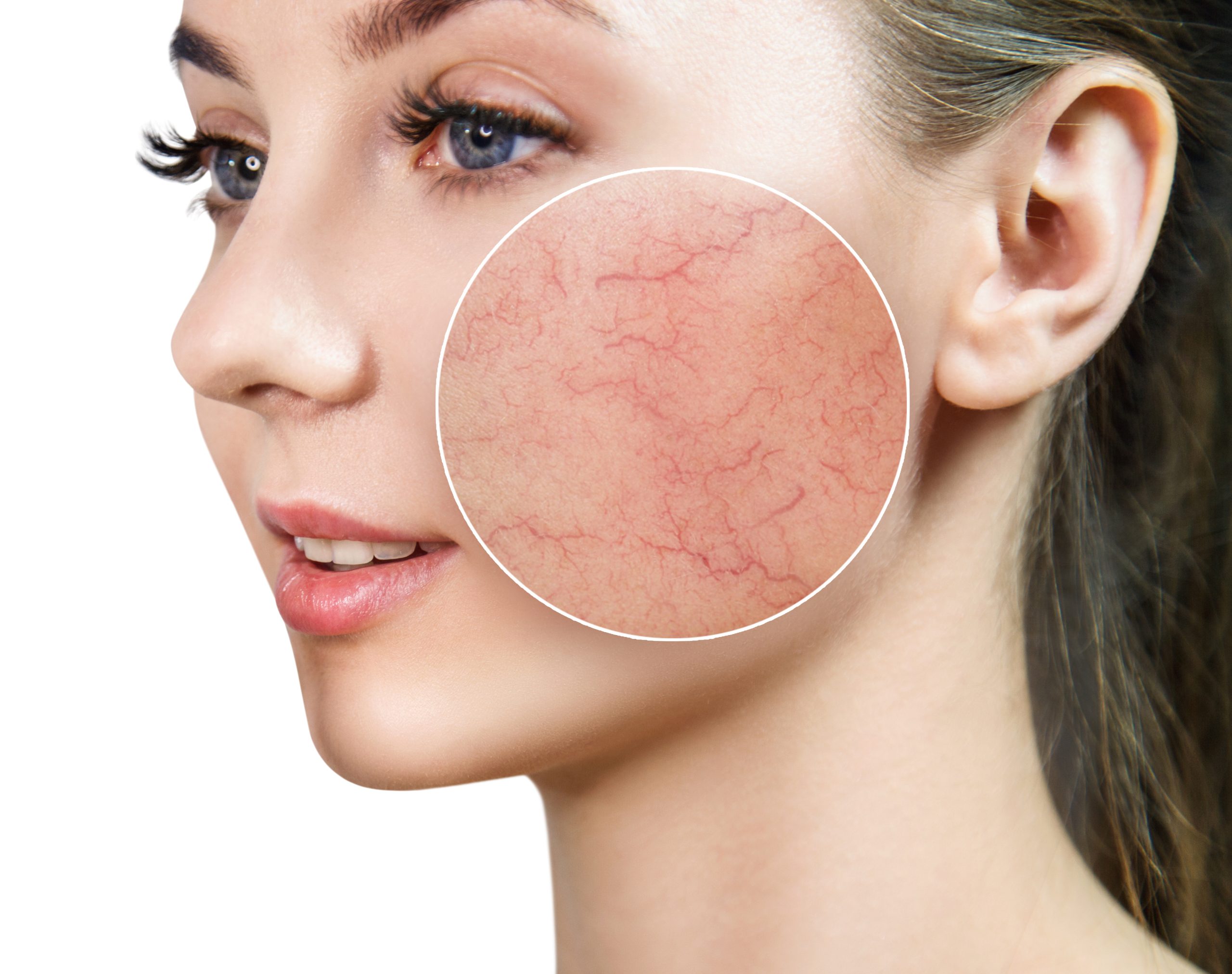
What is the difference between couperose & rosacea?
Couperose and rosacea (also known as copper rose, senile acne or rosacea) are chronic diseases of the facial skin. They are caused by a genetic weakness of the connective tissue layer in the face.
Today, most doctors assume that couperose is not a separate clinical picture, but an early form of rosacea. Couperose, or the early stage of rosacea, manifests itself in the form of redness caused by dilated veins on the face. Later on, feelings of tightness, itching, dryness and increased sensitivity of the facial skin can also occur.
Treatment of rosacea / couperose using an IPL laser
One of the most effective therapies for unwanted redness on the face is laser treatment. The IPL laser is particularly popular here. This is the “gold standard” in the treatment of rosacea thanks to its unique results!
Intense pulsed light therapy is considered a treatment method for rosacea with very good cosmetic results. Its treatment successes are far superior to drug treatments and surgical procedures. The treatment is a laser treatment.
During treatment, the laser irradiates the affected areas of skin in a controlled manner with intense pulses of light. The thermal energy of the laser light welds the blood vessels together in a targeted manner and obliterates them. The unwanted reddish and bluish discoloration disappears, resulting in a visible improvement in the appearance of the skin. In addition to the cosmetic effects, the IPL laser also has a positive effect on the rate of inflammation.
I am always available to answer any questions or concerns you may have about rosacea and my methods. Please feel free to contact me by phone, e-mail or online appointment. Your health is important to me! I look forward to hearing from you!
Treatment of other types of redness on the face
Not only rosacea can be treated well and effectively with IPL treatment. This therapy also helps with the following complaints:
- General dilated blood vessels under the skin
- Reddening of the skin
- Teleangiectasias (translucent blood vessels on the face, décolleté or neck)
- Hemangiomas (blood sponges )
- Port-wine stains
Important FAQs about laser treatment for rosacea
When should I start laser therapy for rosacea?
The treatment method can be used at all stages of the disease. It is recommended that treatment with the IPL laser begins in the fall or winter, as the concentration of melanin in the skin is at its lowest during this time. Melanin is responsible for a tanned complexion. It absorbs the light energy of the IPL laser and weakens its effect.
Is the treatment of rosacea painful?
Intensive pulsed light therapy is an almost painless treatment for patients to treat unwanted pustules, spots and/or nodules under the skin. During treatment, a slight prickling sensation can be felt, which may be perceived as painful by some patients. However, this depends on your individual perception of pain.
How long does the treatment of rosacea take?
A treatment only takes a few minutes. Four to five sessions are required for lasting success. Other laser systems such as copper vapor lasers, argon ion lasers or KTP lasers are not suitable as an alternative to the IPL laser. They are characterized by an unnecessarily increased risk of scarring, which is not the case with intensive pulsed light therapy.




